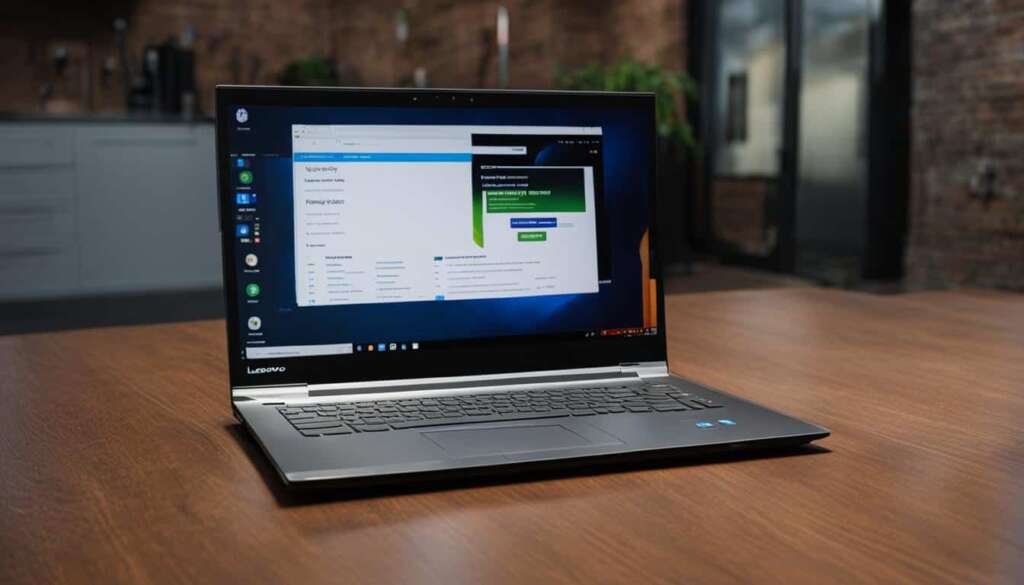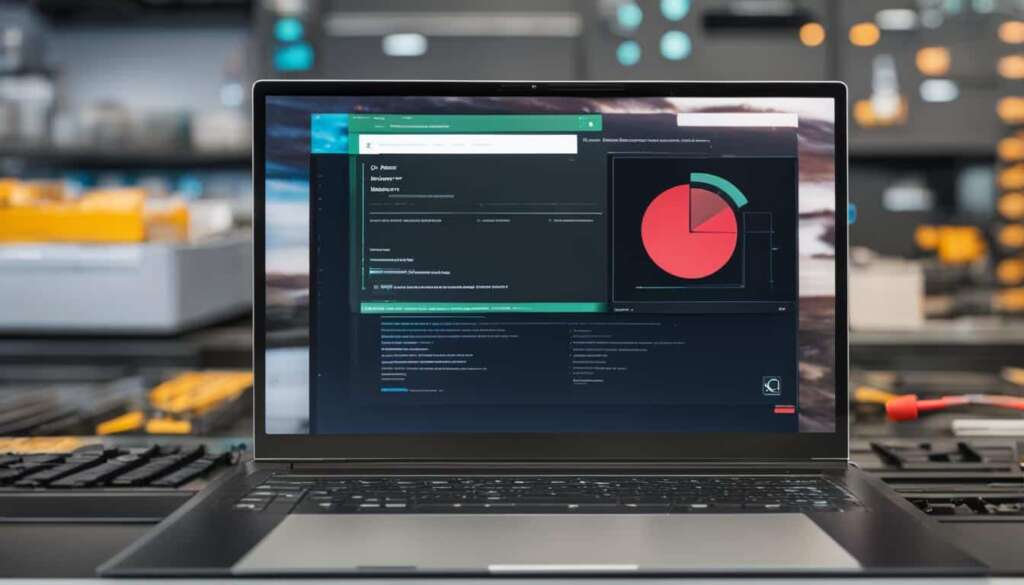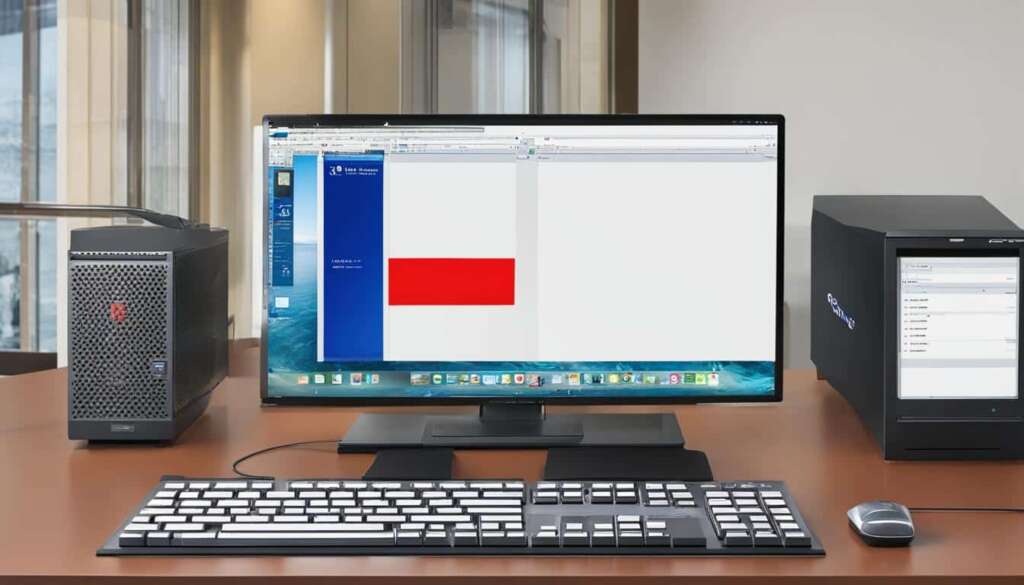Table of Contents
Your laptop is a powerful tool that helps you stay connected, be productive, and entertain yourself. But what happens when it starts acting up? Slow performance, malware infections, and persistent errors can significantly hinder your laptop’s functionality and disrupt your workflow. Luckily, there’s a powerful troubleshooting technique that can help you resolve these issues and give your laptop a fresh start – resetting it.
Resetting your laptop is a simple yet effective way to restore it to its original state, removing clutter and bugs that may have accumulated over time. Performing a factory reset wipes away all personal data, apps, and customizations, bringing your laptop back to its out-of-the-box condition. It’s like giving it a new lease on life.
Now, you might be wondering how to reset your laptop and whether it’s the right solution for you. In this article, we’ll walk you through the steps to perform a factory reset on popular operating systems like Windows, macOS, and Chrome OS. We’ll also discuss why and when you should consider opting for a factory reset and share essential tips to ensure a smooth reset process.
If you’re dealing with a sluggish laptop, constant errors, or want to prepare your device for resale or donation, a factory reset might be just what you need. It’s time to revive your laptop and experience its full potential once again.
What is a Factory Reset and When to Opt for It
A factory reset in a laptop is a process that restores a device to its original factory settings, wiping all personal data, apps, and customizations. It is recommended to opt for a factory reset when experiencing issues such as slow performance, persistent malware infections, or when preparing a laptop for resale or donation.
When your laptop is running slow and struggles to perform basic tasks, a factory reset can often improve its overall performance. By wiping out unnecessary files, programs, and settings, you can eliminate the accumulated clutter that can bog down your system.
Malware infections can be a nightmare, causing system crashes, data breaches, and privacy issues. Sometimes, no matter how hard you try, the infections can remain persistent despite antivirus scans and cleaning efforts. In such cases, a factory reset can be a last resort to completely remove all the infections and restore your laptop’s security.
Before performing a factory reset, it is essential to back up any important files to ensure they are not lost during the process. Whether it’s important documents, treasured photos, or personal videos, a backup ensures you have a copy of your data in case anything goes wrong during the reset.
| When to Opt for a Factory Reset | Why is it Necessary? |
|---|---|
| Laptop Performance Issues | A factory reset eliminates clutter, streamlines the operating system, and can significantly improve performance. |
| Malware Infections | Persistent malware infections can be removed by wiping the laptop clean and starting afresh. |
| Resale or Donation | A factory reset ensures that your personal data and settings are erased, leaving a clean slate for the next user. |
Steps to Perform a Factory Reset on Windows 10
Performing a factory reset on Windows 10 is a straightforward process that can help resolve various computer issues. Whether you want to refresh your system or troubleshoot persistent problems, a factory reset can provide a clean slate for your Windows 10 laptop. Here’s a step-by-step guide to help you through the process:
Step 1: Access the Settings
Start by clicking on the Start menu in the bottom left corner of your screen. From the menu, select the Settings icon, which resembles a gear or a small cogwheel.
Step 2: Go to Update & Security
In the Settings window, you’ll find various options. Locate and click on the “Update & Security” category.
Step 3: Select Recovery
Within the Update & Security section, you’ll find a list of subcategories on the left. Look for and click on “Recovery.”
Step 4: Initiate the Reset
Under the “Reset this PC” section, you’ll see the option to “Get started.” Click on it to begin the factory reset process.
Step 5: Choose Your Reset Preferences
Once the reset process begins, you’ll be prompted to choose whether you want to keep your personal files or remove everything from your laptop. Select the option that aligns with your preferences.
If you choose to remove everything, you have the further option to clean the drive. Cleaning the drive ensures that your personal data is securely deleted and cannot be recovered. This step is particularly important if you plan to sell or dispose of your laptop.
Step 6: Start the Reset
After selecting your reset preferences, click on the “Reset” button to initiate the factory reset process. Windows will guide you through the remaining steps and provide progress updates.
Once the reset is complete, your laptop will be restored to its original factory settings. You can then proceed to set up your laptop as if it were brand new, installing apps, customizing settings, and personalizing your device to your liking.

Performing a factory reset on Windows 10 can be a powerful solution to troubleshoot issues and revitalize your laptop. Just remember to back up any important personal files before proceeding, as the reset process will remove them from your device.
Steps to Perform a Factory Reset on a Mac
Resetting a MacBook is a straightforward process that can help resolve various issues and provide a fresh start. Follow these steps to perform a factory reset on your Mac:
- Back up your important data: Before initiating a factory reset, it’s crucial to back up all your important files, documents, and media to ensure they are not lost during the process.
- Restart your Mac: Begin by restarting your Mac. You can do this by clicking on the Apple menu in the top-left corner of your screen and selecting the “Restart” option.
- Enter Recovery Mode: As your Mac starts rebooting, hold down the Command + R keys on your keyboard until the Apple logo appears. This will boot your Mac into Recovery Mode.
- Choose a reinstallation option: Once in Recovery Mode, you will see various options. Select either “Reinstall macOS” or “Disk Utility” depending on your preference and the severity of the issues you are facing.
If you choose to reinstall macOS:
- Select “Reinstall macOS” option: If you want to reinstall macOS, choose the “Reinstall macOS” option and follow the on-screen instructions. This will download and reinstall the operating system, leaving your personal data intact.
If you choose to use Disk Utility:
- Launch Disk Utility: If you opt to use Disk Utility, select it from the Recovery Mode menu. This tool allows you to erase your startup disk.
- Erase the startup disk: In Disk Utility, select your startup disk and click on the “Erase” button. This will erase all data on the disk, including the operating system.
- Follow the prompts to reset the drive: After erasing the startup disk, follow the on-screen prompts to reset the drive and reinstall macOS.
Remember, performing a factory reset on your Mac will remove all personal data, apps, and customizations. It’s essential to back up your files and documents beforehand to avoid losing any important information.
Steps to Perform a Factory Reset on a Chromebook
Resetting a Chromebook is a straightforward process that allows you to restore it back to its factory settings. Whether you want to solve performance issues or simply start afresh, a factory reset can be done in just a few steps. Here’s a step-by-step guide:
- Log Out: Begin by logging out of your Chromebook. This ensures that it is disconnected from your user account.
- Press Ctrl+Alt+Shift+R: After logging out, press the Ctrl, Alt, Shift, and R keys simultaneously on your Chromebook’s keyboard. This key combination will bring up the reset screen.
- Click on Restart: Once the reset screen appears, click on the Restart button to initiate the factory reset process.
- Choose Powerwash: After clicking Restart, you will see a prompt asking you to choose between different reset options. Select Powerwash to proceed with the factory reset.
After completing these steps, your Chromebook will begin the factory reset process, wiping all personal data and settings. It’s important to note that you will need to register your Google account with the device again after the reset. This ensures that you can continue using the Chromebook with your own Google account.
Performing a factory reset on your Chromebook can be beneficial when you’re experiencing technical issues or want to start with a clean slate. Just make sure to log out, follow the steps above, and register your Google account afterward to get your Chromebook back up and running.
Conclusion
Performing a factory reset on your laptop can be a game-changer when it comes to resolving common computer problems and giving your device a fresh start. Whether you’re dealing with slow performance, persistent malware infections, or unresolvable errors, a factory reset can help restore your laptop to its original state and improve its overall functionality.
However, before you dive into a factory reset, it’s crucial to back up any important data to avoid the risk of losing valuable files and documents. Additionally, it’s advisable to try less drastic troubleshooting measures first, such as updating software, running antivirus scans, or clearing out unnecessary files and programs. These steps may help resolve the issue without the need for a complete reset.
Furthermore, when it’s time to bid farewell to your old laptop, recycling it responsibly is essential to protect your personal data from falling into the wrong hands. In addition to performing a factory reset, take extra precautionary measures to ensure complete data destruction. Remove hard drives and physically destroy them or use data destruction software to wipe the drive clean.
Lastly, consider donating or recycling your old laptop. Many organizations and facilities specialize in properly disposing of electronic waste, ensuring that valuable components are repurposed and harmful materials are disposed of safely. By recycling your old computer, you not only contribute to environmental sustainability but also support a circular economy.
FAQ
What is a factory reset?
A factory reset is a process that restores a device to its original factory settings, removing all personal data, apps, and customizations.
When should I opt for a factory reset on my laptop?
It is recommended to opt for a factory reset when experiencing issues such as slow performance, persistent malware infections, or when preparing a laptop for resale or donation.
How do I perform a factory reset on Windows 10?
To perform a factory reset on Windows 10, click on the Start menu, select Settings, go to Update & Security, choose Recovery, and under the Reset this PC section, click on the Get started button. Choose between keeping your files or removing everything, and if you choose to remove everything, decide whether to clean the drive as well. Finally, click on Reset to start the factory reset process.
How do I perform a factory reset on a Mac?
To perform a factory reset on a Mac, restart the computer and hold down Command + R to enter Recovery Mode. From there, you can choose to reinstall macOS or use Disk Utility to erase the startup disk and follow the prompts to reset the drive.
How do I perform a factory reset on a Chromebook?
To perform a factory reset on a Chromebook, log out, then press Ctrl+Alt+Shift+R to bring up the reset screen. Click on Restart and choose Powerwash to reset the Chromebook back to its factory settings. After the reset, you will need to register your Google account with the device again.
What are the benefits of performing a factory reset on a laptop?
Performing a factory reset can effectively resolve common computer problems, provide a fresh start, and remove clutter and bugs that may have accumulated over time.
How can I protect my personal data when recycling or disposing of an old computer?
To protect personal data when recycling or disposing of an old computer, it is recommended to take extra precautionary measures to ensure data destruction, such as using specialized software to wipe the hard drive or physically destroying the drive.













